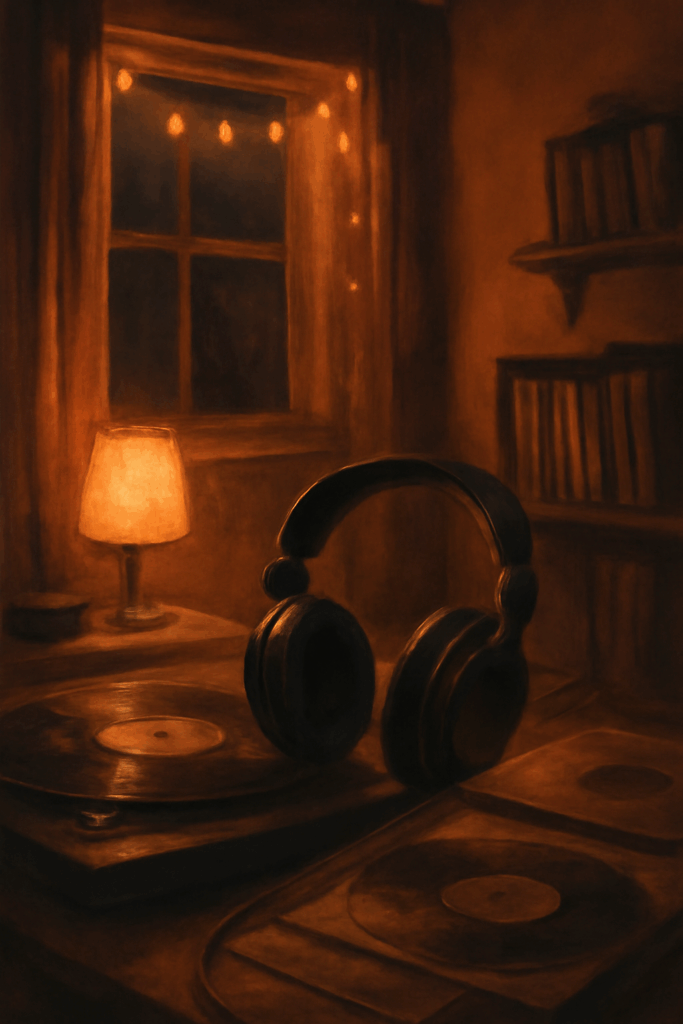Have you ever stumbled across a song you loved in high school, except this time, it’s slower, drenched in reverb, and it just hits differently? You’re not alone. The “slowed and reverb” remix trend has quietly conquered YouTube, TikTok, and endless Spotify playlists, transforming everything from trap anthems to pop hits into melancholy, dreamy masterpieces.
For many, hearing these remixed tracks is like stepping into a hazy memory: familiar and yet deeply altered. But why does slowing a song down and adding reverb make it resonate on such an emotional level?
From the streets of Houston’s chopped-and-screwed scene to late-night Reddit threads where people swap favorite remixes, slowed and reverb isn’t just a fad—it’s a musical movement that taps into nostalgia, emotion, and the powerful connection between sound, brain, and memory.
Let’s break down the science, the artistry, and the raw listener experiences behind the phenomenon—plus, real voices from Reddit sharing why these tracks have become their go-to soundtrack for both joy and heartbreak.

The Roots: Brief History of Slowed + Reverb
Slowed and reverb remixes didn’t come from nowhere. Their DNA can be traced back to the early 1990s Houston hip-hop scene—most famously, DJ Screw’s “chopped and screwed” technique. By manipulating tempo, pitch, and reverb, these artists transformed party tracks into meditative, immersive experiences. Fast forward to the 2010s, and YouTube creators revived and popularized the formula, spreading the vibe globally.
The Science: Why Does Slowed and Reverb Hit Different?
1. Sound Waves and Human Emotion
When a song is slowed and its pitch lowered, the underlying sound waves vibrate more slowly. Research shows that lower frequencies and slower tempos can decrease resting heart rates, calm breathing, and even reduce brain activity related to overthinking. In fact, one commenter shared on Reddit:
“All the songs hit different at night with slowed and reverb. My guess is the lower frequencies and tones might cause the brain to actually enter a ‘SLOW’ mode… it’s also soothing in a hard to explain way.”
2. The Power of Reverb
Reverb isn’t just an effect—it’s an emotional amplifier. It simulates space and depth, creating a sense of vastness and intimacy at the same time. A reverberated sound feels “larger than life” yet paradoxically more personal. In the words of Fermi Music’s documentary:
“Reverb emulates a larger three-dimensional space… But paradoxically, that vastness doesn’t make the sound feel distant. It makes it feel closer. That’s the power of intimate immensity.”
This effect explains why listeners describe slowed and reverb tracks as “dreamy,” “ethereal,” and “nostalgic”—even when they’re hearing a song for the very first time.
3. Tempo: Turning Up the Emotion
Slower tempos encourage reflection. Scientific studies suggest that slower music can actually lower blood pressure and enhance mood stability, especially when paired with “warmer” tones. For many, these tracks become the perfect late-night or introspective soundtrack. As one Redditor put it:
“Whenever I decide to smoke a joint I usually accompany it with that playlist, as it just calms me down. Highly recommend anyone to find a tune they like and see if there’s a slowed+reverbed option!!”
4. Personalizing the Experience
Slowed and reverb tracks give new life to songs you already know by recontextualizing them. Redditors repeatedly mention how these remixes can make upbeat tracks suddenly feel melancholy or wistful:
“It gives any song a whole new meaning and feeling. What could be an upbeat song suddenly turns into a song where I find nothing but melancholy, nostalgia, and longing for something.”
The Role of Nostalgia and Memory
One striking effect of slowed and reverb tracks is their uncanny ability to evoke nostalgia, often for times or places listeners have never actually experienced. Websites dedicated to the evolution of the genre note:
“Many listeners report that slowed + reverb music triggers strong feelings of nostalgia, even for songs they’re hearing for the first time” .
This phantom nostalgia may be explained by neuroscience: music that emphasizes slow tempo and deep reverb taps into the brain’s memory networks, making it easier to associate the music with past emotions, imagined places, or bittersweet longing. The brain literally “fills in the gaps,” turning song into story.

Case Study Table: Slowed + Reverb vs. Original
Psychological Benefits & Drawbacks
| Aspect | Slowed + Reverb Effect |
|---|---|
| Mood | Can make listeners feel more introspective, relaxed |
| Focus | Reduces overthinking, encourages emotional openness |
| Sleep & Calm | Soothes anxiety, good for winding down at night |
| Nostalgia | Triggers “felt” memories and longing |
| Musical Detail | Lets you appreciate subtleties in the composition |
| Overuse/Negativity | Can sound flat, muddy, or boring to some |
How to Make a Slowed and Reverb Track
- Take any digital audio workstation (DAW) and load a song.
- Slow the tempo by 10-30%.
- Lower the pitch slightly.
- Add a healthy dose of reverb.
- Export and share—or just listen privately.
No surprise, this “low barrier of entry” is both a point of appeal (anyone can do it!) and frustration (some musicians see it as uncreative).
Culture: Where It’s Going Next
What started as a niche YouTube genre now appears in mainstream charts, video games, and even movie soundtracks. TikTok alone saw 38% of its top-trending tracks in 2023 feature some sort of tempo or pitch alteration, with slowed and reverb leading the charge. Far from a fleeting meme, the sound is becoming a signature of a generation’s digital nostalgia—equal parts comfort and escapism.
Final Thoughts
Slowed and reverb isn’t just an internet trend—it’s a convergence of music technology, nostalgia, and mood-hacking science. Whether you reach for these remixes at 3a.m. because you’re happy, heartbroken, or just want to feel something new, their appeal lies in both the familiar and the uncanny. Like looking at the world through rain-streaked glass, these tracks awaken emotions that the polished originals sometimes miss.
Of course, tastes are as diverse as people. Not every song gets better when slowed and reverbed, and not every listener will connect. But as the genre continues to morph and mature, expect it to stick around—reminding us that sometimes, slowing down lets us truly hear not just the music, but ourselves.
If you’re reading this late at night with headphones on, enjoying a slowed and reverb track, you already know: sometimes, slowing down is the only way forward.
10 FAQs About Slowed & Reverb
Lower pitch and slower tempo calm the nervous system, while reverb adds emotional depth and space, creating a more immersive and introspective listening experience.
They have deep roots in the chopped-and-screwed hip-hop scene of 1990s Houston, later popularized on platforms like YouTube.
Opinions are mixed. Some enjoy the exposure and reinterpretation, especially if royalties are shared, while others see it as unoriginal or even disrespectful of their artistry.
While it can be applied to any genre, listeners tend to agree it works best with hip-hop, R&B, and atmospheric, synth-heavy pop tracks.
Absolutely. Many report that details, textures, and emotions become more pronounced, letting them experience the song in a new way.
Yes, studies show that lower tempos, frequencies, and reverberated sounds are connected to decreased stress, better mood, and enhanced memory recall.
Slowed tempos and atmospheric effects allow the brain to process memories and associations more deeply, triggering feelings of nostalgia and longing—even for new songs.
Technically yes, which is part of their viral appeal and criticism. With basic software, anyone can create one in minutes.

Candy is the social media manager and resident content creator at SSSlowedAndReverb. A DJ herself, she brings her deep love for slowed and reverb music into every post, blending real-world experience with internet culture to create content that resonates with fans and creators alike.